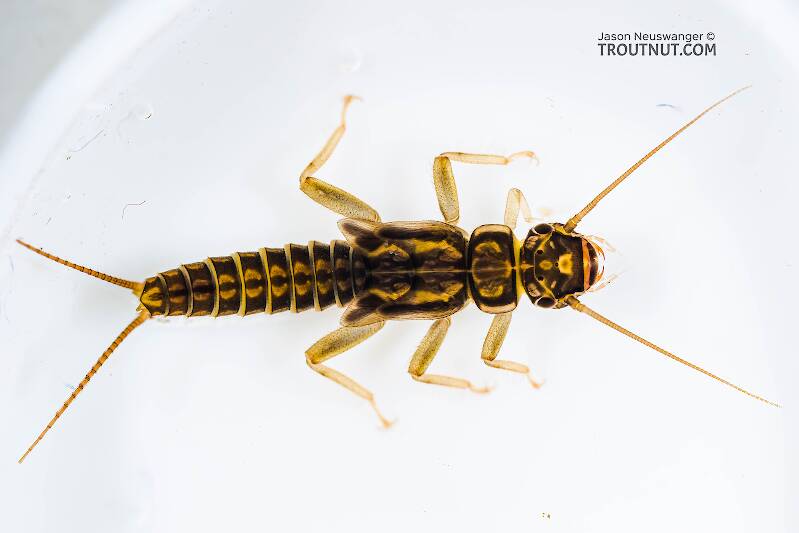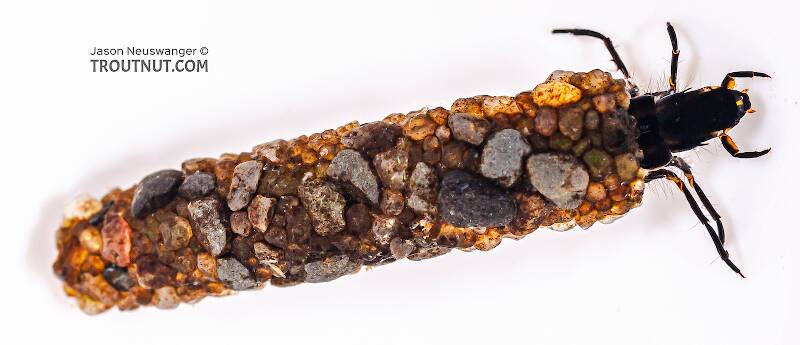
Salmonflies
Pteronarcys californica
The giant Salmonflies of the Western mountains are legendary for their proclivity to elicit consistent dry-fly action and ferocious strikes.
Featured on the forum


Troutnut is a project started in 2003 by salmonid ecologist Jason "Troutnut" Neuswanger to help anglers and
fly tyers unabashedly embrace the entomological side of the sport. Learn more about Troutnut or
support the project for an enhanced experience here.
Caddisfly Genus Psilotreta (Dark Blue Sedges)
It pays to learn the quirks of this very abundant and unusual genus. Its hatches stumped Gary LaFontaine for years before he learned their subtleties, prompting him to give the most common species, Psilotreta labida, the nickname "Slap-in-the-Face Caddis."
Where & when
The most important species are found in the East. They often emerge together with the large Green Drake mayflies, Ephemera guttulata, which can be reduced to a masking hatch when these caddisflies are thick.In 52 records from GBIF, adults of this genus have mostly been collected during June (60%), May (33%), and July (6%).
In 33 records from GBIF, this genus has been collected at elevations ranging from 20 to 5614 ft, with an average (median) of 2356 ft.
Genus Range
Hatching behavior
Because the larvae gather in large numbers on certain rocks to pupate, fishing the emergence demands unusual tactics from the angler. Gary LaFontaine describes them in Caddisflies:A hundred or more cases might be stacked in layers on the underside of a particular rock. When the emergence period begins the pupae pop continually from this area. They escape from the cocoon and wash out from under the rock, creating a food line for trout on the downstream side of the pupation site. During the peak evening hours the emerging pupae may create feeding situations in only a small part of the stream. They attract trout into these prime zones (which fly fishermen can find beforehand by searching for the clusters of pupae).
Egg-Laying behavior
Time of day: Evening
Larva & pupa biology
Diet: Omnivorous
Substrate: Silt, sand, or gravel
Environmental tolerance: Prefers cool streams
Shelter type: Horn-shaped sand and gravel cases
Specimens of the Caddisfly Genus Psilotreta
1 Male Adult
1 Larva
Start a Discussion of Psilotreta
References
- LaFontaine, Gary. 1981. Caddisflies. The Lyons Press.
- Schwiebert, Ernest G. 1955. Matching the Hatch. MacMillan Publishing Company.
- Swisher, Doug and Carl Richards. 2000. Selective Trout. The Lyons Press.
Caddisfly Genus Psilotreta (Dark Blue Sedges)
Taxonomy
Species in Psilotreta: Psilotreta frontalis, Psilotreta labida
4 species (Psilotreta amerus, Psilotreta indecisa, Psilotreta rossi, and Psilotreta rufa) aren't included.



